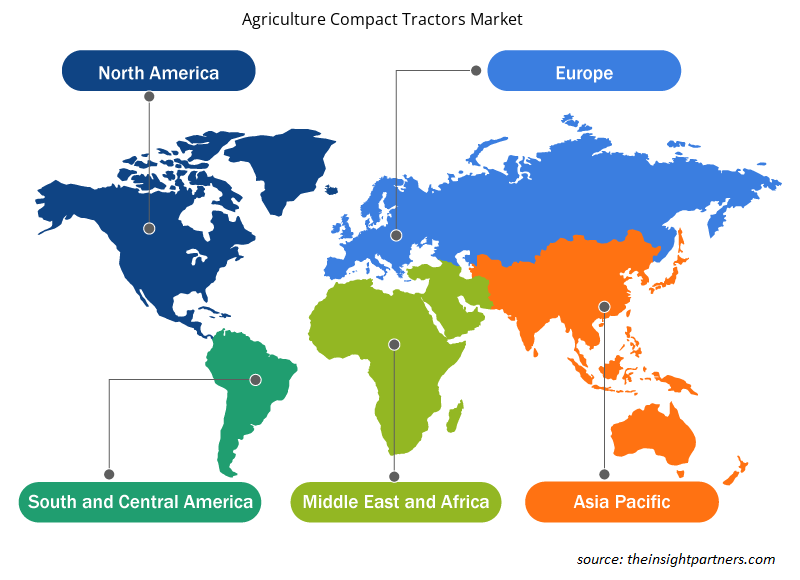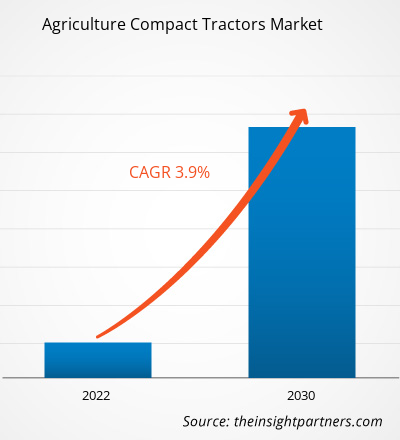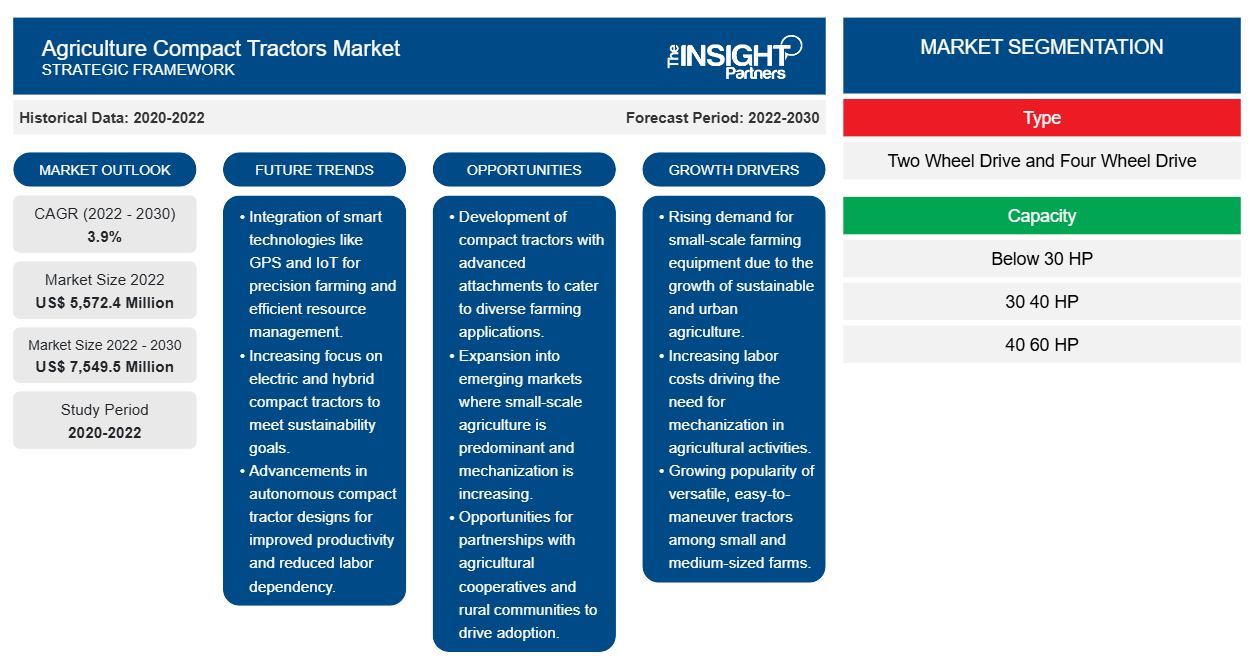[調査レポート] 農業用小型トラクターの市場規模は、2022年の55億7,240万米ドルから2030年には75億4,950万米ドルに成長すると予測されており、2022年から2030年にかけて市場は3.9%のCAGRを記録すると予想されています。
アナリストの視点:
農業部門の継続的な成長と、近代的な機器への嗜好の高まりが、世界の農業用小型トラクター市場の成長を牽引しています。食料の需要は、人口の継続的な増加とともに増加しています。国連が最近発表した予測によると、世界の人口は2030年までに85億人に達し、2050年までにさらに97億人に増加すると予想されています。その結果、農産物の需要が急速に増加し、農家は農場の収穫量を増やすという負担を強いられています。したがって、農業活動の規模の拡大が、農業用小型トラクターの需要を促進しています。
韓国の重機・電子部品メーカーLS Mtron社は、2024年1月に北米で新型小型トラクターMT2・MT2Eシリーズを発売した。同シリーズのプレミアムMT2とバジェットMT2Eの2機種は、狭い場所での作業利便性の向上を図り、小規模農業に適した製品となっている。スムーズな前進・後進操作を可能にする使いやすいシャトルや、土砂や砂利の運搬に適したデュアルペダルなど、さまざまな作業を想定した製品ラインアップとなっている。農業用小型トラクターメーカーによるこうした製品開発活動が、農業用小型トラクター市場の成長を牽引している。
市場概要:
小型トラクターは、通常小型ユーティリティ トラクターと呼ばれ、主に耕作、草刈り、植え付け、耕作、運搬などの小規模な農作業に使用されます。小型トラクターはサイズと容量が小さく、小規模農場、果物やナッツの栽培場、ブドウ園、庭園、芝生に適しています。小型トラクターは燃料消費量が少なく、メンテナンスの必要性が低いため、運用コストが低くなります。
アジア太平洋地域は、中国やインドなどの国での大規模な農業活動により、農業用小型トラクター市場を支配しています。ただし、北米とヨーロッパは、予測期間中に強力なCAGR値を記録すると予想されています。米国はナッツと果物の主要生産国の1つです。米国農務省が2022年に発表したデータによると、小規模家族経営の農場が米国の農場全体の88%を占めています。したがって、米国に多数の小規模農場が存在することは、この国の農業用小型トラクター市場に利益をもたらす重要な要因です。
要件に合わせてレポートをカスタマイズする
このレポートの一部、国レベルの分析、Excelデータパックなど、あらゆるレポートを無料でカスタマイズできます。また、スタートアップや大学向けのお得なオファーや割引もご利用いただけます。
-
このレポートの主要な市場動向を入手してください。この無料サンプルには、市場動向から見積もりや予測に至るまでのデータ分析が含まれます。
市場の推進要因:
小規模農家を支援する政府の取り組み
政府の政策や資金提供などの支援策により、各国の小規模農場の数が増えています。たとえば、米国農務省は小規模農家や初心者農家にマイクロローンプログラムを提供しており、簡単な申請で最大35,000米ドルの融資を受けることができます。さらに、2023年にはガイアナ政府が国家食料システムパスウェイプログラムを通じてイニシアチブを発表しました。このプロジェクトの一環として、小規模農家や全国の継続的な社会経済的エンパワーメントプログラムの参加者に、農業投入資材と一時的な現金助成金が提供されました。このような政府の取り組みにより、小規模農家は小型トラクターなどの農業機械を導入できるようになりました。さらに、これらのプログラムや取り組みにより、発展途上国や先進国の小規模農業に適した環境が整い、最終的には農業用小型トラクターの市場規模の拡大につながります。
セグメント分析:
農業用小型トラクター市場の分析は、タイプ、容量、および用途という以下のセグメントを考慮して実施されています。容量に基づいて、市場は30HP未満、30HP-40HP、および40HP-60HPに分類されます。40HP-60HPと30HP-40HPのセグメントは、農業用小型トラクターの市場シェアの50%以上を占めています。これらのトラクターは、耕作、耕作、植え付け、収穫などの作業を行う中規模農場に適しています。たとえば、Farmtracは2024年に新しいFarmtrac 60 Powermaxxトラクターを発売しました。このトラクターには55 HPエンジンがあり、いくつかの機能を備えています。
地域分析:
農業用小型トラクター市場レポートの地理的範囲には、北米(米国、カナダ、メキシコ)、ヨーロッパ(スペイン、英国、ドイツ、フランス、イタリア、その他のヨーロッパ)、アジア太平洋(韓国、中国、インド、日本、オーストラリア、その他のアジア太平洋)、中東およびアフリカ(南アフリカ、サウジアラビア、UAE、その他の中東およびアフリカ)、南米および中米(ブラジル、アルゼンチン、その他の南米および中米)が含まれます。アジア太平洋地域は、2022年に最大の農業用小型トラクター市場シェアを占めました。
北米の農業用小型トラクター市場は、米国、カナダ、メキシコに分割されています。北米、特に米国、カナダ、メキシコなどの国の農業部門は、農業用小型トラクターの需要を主に牽引しています。農業部門の拡大と継続的な製品開発は、今後もこの地域の市場を押し上げ続けるでしょう。米国農務省が2021年に発表したデータによると、農業部門は2021年に米国のGDPに約1兆2,640億米ドル貢献し、国内GDPの5.4%を占めました。カナダ政府が2022年に発表したデータによると、農業および農業食品部門はカナダ経済に大きく貢献しています。カナダの農産物販売は、年率5.6%で成長し、2022年には合計877億米ドルに達しました。小規模農場の増加により、小型トラクターの需要が高まり、ベンダーに新たな成長の道が開かれています。さらに、米国の多くの主要企業は現在、完全に自動化された小型トラクターの開発に注力しており、このような開発により、今後数年間で北米の農業用小型トラクター市場に新たなトレンドがもたらされると予想されています。
農業用小型トラクター市場の地域別分析
予測期間を通じて農業用小型トラクター市場に影響を与える地域的な傾向と要因は、Insight Partners のアナリストによって徹底的に説明されています。このセクションでは、北米、ヨーロッパ、アジア太平洋、中東、アフリカ、南米、中米にわたる農業用小型トラクター市場のセグメントと地理についても説明します。

- 農業用小型トラクター市場の地域別データを入手
農業用小型トラクター市場レポートの範囲
| レポート属性 | 詳細 |
|---|---|
| 2022年の市場規模 | 55億7,240万米ドル |
| 2030年までの市場規模 | 75億4,950万米ドル |
| 世界のCAGR(2022年 - 2030年) | 3.9% |
| 履歴データ | 2020-2022 |
| 予測期間 | 2022-2030 |
| 対象セグメント |
タイプ別
|
| 対象地域と国 |
北米
|
| 市場リーダーと主要企業プロフィール |
|
農業用小型トラクター市場のプレーヤー密度:ビジネスダイナミクスへの影響を理解する
農業用小型トラクター市場は、消費者の嗜好の変化、技術の進歩、製品の利点に対する認識の高まりなどの要因により、エンドユーザーの需要が高まり、急速に成長しています。需要が高まるにつれて、企業は提供品を拡大し、消費者のニーズを満たすために革新し、新たなトレンドを活用し、市場の成長をさらに促進しています。
市場プレーヤー密度とは、特定の市場または業界内で活動している企業または会社の分布を指します。これは、特定の市場スペースに、その規模または総市場価値と比較して、どれだけの競合相手 (市場プレーヤー) が存在するかを示します。
農業用小型トラクター市場で事業を展開している主要企業は次のとおりです。
- ヤンマートラクター
- マヒンドラ
- TYM株式会社
- ソレクトラック
- ジョンディア
免責事項:上記の企業は、特定の順序でランク付けされていません。

- 農業用小型トラクター市場のトップキープレーヤーの概要を入手
主要プレーヤー分析:
農業用小型トラクター市場レポートで紹介されている主な企業には、AGCO GmbH、ヤマハトラクター、ソリス、ボブキャットカンパニー、マヒンドラトラクター、クボタ、ジョンディア、マッセイファーガソン、ニューホランドなどがあります。これらの企業に加えて、この調査では、世界のユーティリティ小型トラクター市場の全体的な概要を把握するために、他のいくつかの重要な企業も調査および分析されました。
最近の動向:
合併や買収などの無機的および有機的な戦略は、世界の農業用小型トラクター市場の企業によって広く採用されています。プレスリリースによると、農業用小型トラクター市場の主要プレーヤーによる最近の動向をいくつか以下に示します。
年 |
ニュース |
地域 |
|
2023年8月 |
Case IH は、新しい Farmall Subcompact 25SC トラクターを発売しました。この新しく発売されたモデルは、Case IH のポートフォリオの中で最小のトラクターです。新しいトラクターのエンジン範囲は 25 HP から 115 HP です。 |
アジア太平洋 |
|
2023年2月 |
ボブキャットは、1000、2000、4000 シリーズという新しい小型トラクターのラインナップを発表しました。このシリーズには、エンジン出力に基づいて区別される 9 つの小型トラクター モデルがあります。これらのトラクターの出力範囲は 25 から 85 HP です。 |
ヨーロッパ |
- 過去2年間の分析、基準年、CAGRによる予測(7年間)
- PEST分析とSWOT分析
- 市場規模価値/数量 - 世界、地域、国
- 業界と競争環境
- Excel データセット
最新レポート
お客様の声
購入理由
- 情報に基づいた意思決定
- 市場動向の理解
- 競合分析
- 顧客インサイト
- 市場予測
- リスク軽減
- 戦略計画
- 投資の正当性
- 新興市場の特定
- マーケティング戦略の強化
- 業務効率の向上
- 規制動向への対応























 無料サンプルを入手 - 農業用小型トラクター市場
無料サンプルを入手 - 農業用小型トラクター市場